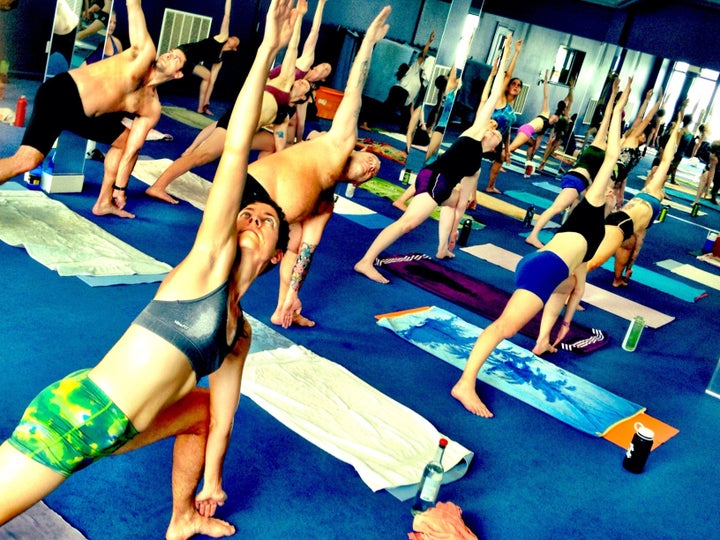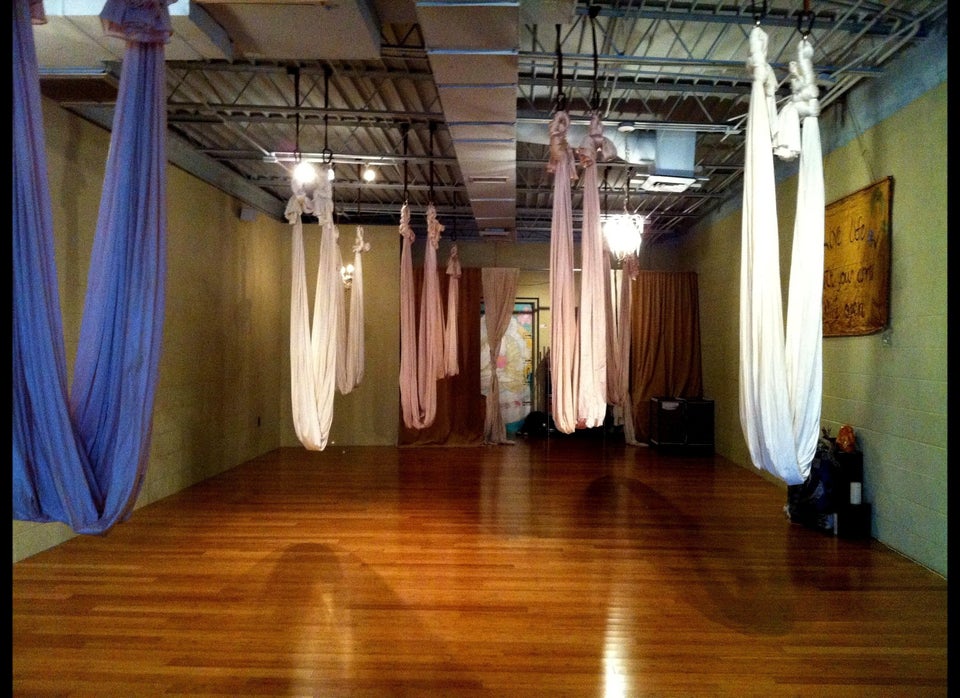
Introduced in the 1970s, Bikram yoga has been gaining in popularity ever since. Many believe it to be the fastest growing of all yoga methods. Right along with it, hot yoga, which is typically a hot version of the Vinaysa style has been growing in popularity.
Bikram yoga consists of a series of 26 postures and two breathing exercises performed with a group in a room heated to a temperature of 105 degrees (hot Vinaysa is typically performed at a slightly lower temperature). The sequence of poses, or asanas, is designed to work every part of your body, including your muscles, joints, glands and organs.
More from Everyday Health:
5 Diet-Busting Food Choices
5 Signs Exercise Is Causing Your Asthma
Is Your Makeup Killing You?
“Bikram yoga is scientifically designed to warm, stretch, strengthen, and detoxify the body from the inside out,” explains Erin Cleary Cook, owner and director of Bikram Yoga Main Line in Berwyn, Pa.
This yoga method is named for Bikram Choudhury, who began studying hatha yoga when he was 4. By the age of 12, he'd become the youngest-ever national yoga champion of India -- a title he held for three consecutive years until his guru asked him to stop competing so other participants could have a chance, Cook says. Bikram continued his athletic career as a marathon runner and a champion weight lifter, setting world records and competing in the 1964 Olympics.
When Bikram was 20, he crushed his knee in a weight-lifting accident and wasn't expected to walk again. Guided by his guru, Bikram developed his 26-posture series to restore his health and rehabilitate his knees. He quickly developed a following as an expert yoga teacher.
"Bikram dedicated his life and yoga teachings to encouraging people to find and harness their inner strength and to do the thing that they think they cannot do, therefore leading his students to self-realization," Cook says. An athlete while a student at Harvard, Cook turned to Bikram when she realized it could provide as intense a workout as running five miles and would be easier on her body. Trained by Bikram Choudhury, she opened her own studio in 2004.
Hot And Bikram Yoga 101
Bikram yoga classes are always 90 minutes long while other hot yoga styles vary in length. The group exercise classes are designed for all levels of practitioners, from first-time students to those who have been practicing for years, Cook says. Each of the 26 poses is held twice and for a set period of time. The poses can be physically challenging, but the warmth of the room helps promote flexibility.
During the group exercise class, you also work your internal organs, practitioners say. "By systematically compressing and releasing tension on the organs and joints, the Bikram method delivers an intense workout and full-body massage," Cook says. As with other yoga methods, Bikram yoga has a meditative component. During the class, you work on reducing your sources of stress and putting your body back in balance.
Ali Bruder, 35, of Malvern, Pa., started taking Bikram yoga classes at Cook's studio to lose the weight she had put on with each of her pregnancies. "However, when I lost the weight, I still found myself really addicted to the practice -- it went beyond the physical and became a mental therapy that I needed daily," she says.
Jenn Myles, 41, has been taking Bikram yoga classes at Bikram Yoga Portsmouth in New Hampshire for eight years. "Whenever I feel tired, down, tense, anxious, or happy, energetic or relaxed, taking a Bikram class is a fantastic way to spend my time," she says. "It helps improve my mental focus both in class and outside in the real world."
- Burning calories and losing weight. However, know that performing yoga in a hot room does not necessarily burn more calories than room-temperature yoga.
- Toning, strengthening and lengthening your muscles. "Within the first month of a consistent practice, you will notice you've trimmed your waist, hips, thighs and arms," Cook says.
- Giving your heart and circulatory system a workout as well. You get the benefits of improved circulation and more energy.
- Clearing your mind and improving your outlook. "Bikram yoga is a practice that brings about the union of the body, mind, and spirit," Cook adds.
Bikram Yoga Pros And Cons
On the plus side, Cook says, those who practice Bikram yoga regularly are rewarded with a rejuvenated body, better sleep habits, more energy, less fatigue, better focus and concentration, and less stress. "The heat and systematic nature of the series achieves a level of deep muscle and joint stretching that cannot be achieved anywhere else," she says. "Consistently practicing Bikram yoga at least three times a week the right way will deliver toning of the muscular system, replacing fat with muscle; balancing of the endocrine system; alignment of the skeletal system; and total irrigation of the circulatory system with the help of the respiratory system."
Bikram yoga also has been known to balance hormone levels, stabilize blood sugar levels, regulate blood pressure, decrease back and joint pain, and promote weight loss. "The weight loss and body shape improvements that occur on the outside of the body are a byproduct of the health and medical benefits students receive on the inside," Cook adds.
One of the minuses is that it requires patience. "You shouldn't necessarily expect to be able to accomplish the entire series in your first class," Cook says. "You have to build your practice, step-by-step, taking your time and learning the proper poses."
Also, not everyone does well in a room heated to 105 degrees. Some practitioners might feel weak or faint during a class, at which point it's always a good idea to stop and rest. Drinking a lot of water immediately following the class is also essential, as your body risks severe hydration after so much sweating.
Tips For Starting Bikram Yoga Classes
See your doctor before beginning a hot yoga regimen. Given the length of the class and the high temperature, "it is important you ensure you are healthy enough to practice Bikram yoga," Cook cautions. Look for teachers who are certified in Bikram yoga. Ask to see their credentials.
"Arrive early and tell the teacher it is your first class," Cook says. "Learn exactly what you need to know before class begins." Also, come to class with an open mind. "The hardest part of the Bikram yoga class is walking through the door," she says. Bring a bottle of water, a mat and a large towel to class; some studios provide mats and towels or rent them.
Always be on time -- some studios won't let you in if you're late. If you have physical limitations, tell your teachers before class so they can show you how to adapt. Bikram yoga is for all skill levels, stresses Cook.
Stay With It And You'll See Results
"Consistency and tremendous effort get you results," Bruder says. "It really is a workout where you are a result of your hard work."
Myles agrees that the results are worth the effort: "Over my time as a student, my strength, flexibility, and endurance have improved dramatically," she says. "I can see and feel differences in my postures from month to month and from year to year. This encourages me to continue coming back and working hard at my practice."
Have you tried hot yoga? What do you think?
Check out other unconventional types of yoga in the slideshow below.
For more on yoga, click here.
Flickr photo by stephanieneil
